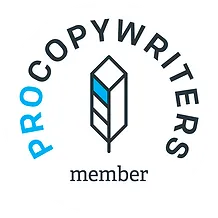If you are looking for a copywriter or working within the industry, it would be understandable to assume that copywriters write flawlessly.
But incorrect grammar is everywhere. From website copy to the flyers that drop through my door, I’m continually amazed at the number of errors that get in the way of reading and understanding.
But incorrect English isn’t always a mistake. In fact, like a musician who knows how to bend the rules of composition, it’s those copywriters that are most flexible with grammar that deliver the best results.
A Brief History of Language
Once upon a time, people didn’t write things down. Language was an oral thing, existing only to say vital phrases like ‘I’ll swap you my goat for a loaf of your bread’. But people realised that some things were being forgotten.
One day, a man (or woman) had a great idea – let’s draw pictures to record information. In fact, let’s not use pictures that can be interpreted in a number of different ways – let’s use symbols that we’ll all agree represent a certain sound.
There were probably thousands of shapes that could be used to make an alphabet. Thousands of little strokes that could later become known as the full stop, or the comma. And thousands of potential uses for each individual symbol.
Today, the shapes that we use for writing are pretty much locked down. The traditions of constructing a sentence, using a capital letter, or inserting a comma, have been well established through the years.
But it’s all just a casual agreement between people. A letter and a word only have a certain meaning because we decided that it did.
And that’s why it’s our right to change that meaning whenever we please.
How To Use Commas In Copywriting
I did well at school, got a degree in the subject, and do some great work as a professional copywriter. English is what I’m good at.
But as I sat down to write this blog post on the subject and looked to give examples of incorrect comma usage that still works, I couldn’t think of one.
I realised that I don’t really know – in an academic sense – when to use a comma, or when not to use one. All I know is the impact of a comma on the way that copy is read – it makes you pause momentarily, take a breath, and process information.
We write because we want to communicate – with each other, with our customers, with historians who look back from the future. Providing that a comma is used to make copy clearer, grammatical perfection is irrelevant.
My advice is never to look for The Queen’s English unless, of course, you are selling something to the Queen. Nobody wants copy that is flawless, because flawless copy is dull.

Comments are closed.